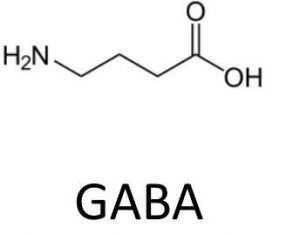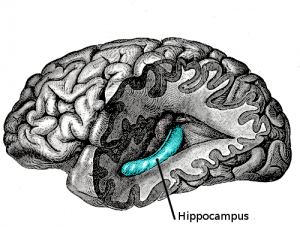Pending assignments, midterms on rainy days, that second serving of dessert – disengaging from unwanted thoughts is a part of daily life. But for people with many psychiatric conditions such as schizophrenia, anxiety, depression, PTSD, etc. this can take the form of intrusive memories, hallucinations, rumination, and more. In November 2017, Chemists and Neuroscientists from University of Cambridge led by Dr Taylor Schmitz identified a specific multi-level mechanism that inhibits out unwanted thoughts.
The researchers recruited 30 healthy participants to do “Think/No-Think” tasks where they learned to associate logically unrelated words, for example, moss/north. The participants then saw the word on a screen and received a green or red cue to think or not think of the associated word, respectively. In other words, if you see moss and the cue is green, you should think of north but suppress that thought if the cue is red. Throughout the experiment, the scientists monitored the activity of brain regions through fMRI and the compositions of the chemicals involved through 1H NMR spectroscopy.

fMRI machine used to measure brain activity. Source: Wikimedia Commons
The researchers discovered that the neurotransmitter (a chemical messenger) GABA, specifically in the hippocampus, a vital area for memory, suppressed unwanted thoughts by limiting activity in neighbouring cells. They also found that our ability to inhibit unwanted thoughts and prevent them from returning increases with the concentration of GABA (Gamma-aminobutyric acid) present in our hippocampus at rest. The results indicated that this relationship is not observable in GABA concentration from other brain regions such as the visual cortex and the prefrontal cortex, which were previously assumed to play a key role in memory/thought suppression as well.

Gamma-aminobutyric acid (GABA) molecule. Source: self

Hippocampus: key area associated with memory.
Source: Wikimedia Commons
Although the paper did not focus on possible treatments using pharmaceutical methods to regulate GABA, the findings have immense potential in treating a wide range of psychiatric conditions marked by intrusive thoughts. This makes it a monumental finding for neuroscience and this paper has been tweeted about 255 times and appeared on 76 news articles since its release 2 weeks ago on Nov 3, creating a ripple in the neuroscience community.
To me, the specificity of the finding is the most fascinating aspect of this research. Neuroscience research heavily relies fMRI and MRI methods that can only indicate the areas of the brain active from which researchers then infer the likely neurotransmitters involved. However, these methods do not tell us how these chemicals interact with each other or the mechanism by which they influence behaviour. This basic but fundamental knowledge discovered by the Cambridge researchers was made possible by combining conventional neuroscience approach with spectroscopic methods. Interestingly, this highlights the growing need for interdisciplinary research to solve more complex mysteries in science, which is currently a critical issue in the scientific community.
Mia Hasan





